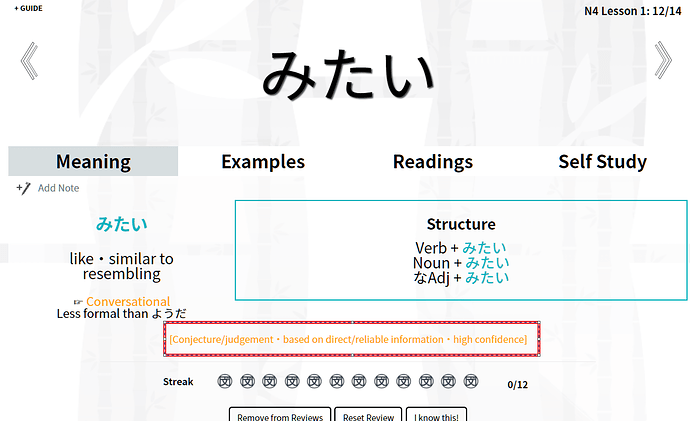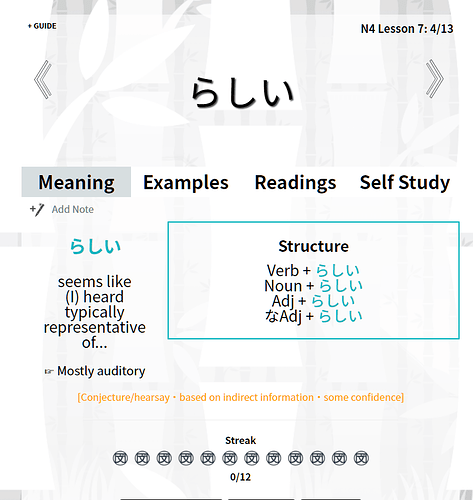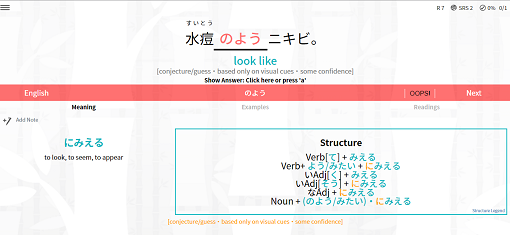The team is working very hard on this problem!
Currently, every time you encounter one of the mentioned grammar points while reviewing, the “nuance hint” corresponding to the reviewed point will be shown at the bottom, so it should help you choose the one you are currently asked for.
This is how it looks like:
As you can see, the nuances are different.
よう/みたい have the highest degree of certainty. You have reliable information that mentioned person doesn’t have money.
So, if you use らしい instead , then it will mean that you base your conjecture on second hand information, and you are less sure(you most likely heard it from someone, or read about it). If you use みたい, then the sentence will be more casual, but certainty level is the same as よう. If you use そう then the conjecture is based on what you see(you are standing next to the guy, and notice he is in ragged clothes etc, those are your visual cues), but the certainty level is lower than both - らしい and よう。Also, そう is often used when it seems that something might happen like change of weather or someone slipping on banana peel(from the visual cues).
Xようにみえる is similar to そう, you are direct observer of something and the thing you see makes you feel X. It is not as certain as ようだ alone.
If you use でしょう(だろう) then it is just a conjecture/guess, without outside information, based on some reasoning. Something like a thought experiment. You can use it to show, that you aren’t really sure about something.
かもしれない is similar to でしょう/だろう but the certainty level is much lower.
Reviewing:







